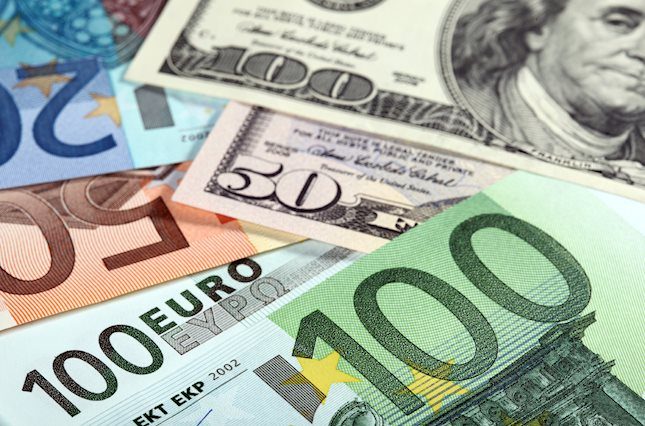US stocks traded sideways Monday amidst little market-moving news as investors position ahead of Wednesday's scheduled FOMC statement, a slew of housing data, and more micro news in a corporate catalyst-rich period. And bond markets are marching to the indifference of US equities with little in the way of price action.
With a quorum of central bank meetings taking center stage this week, a palatable air of uncertainty engulfs global markets. While US stocks and bonds have been treading water, oil prices are on the rise, which complicates the policy decisions of major central banks, including the Federal Reserve, ECB, and Bank of England. These central banks are grappling with elevated inflation levels, and the trajectory of oil prices, especially if they remain high for the remainder of the year, may play a crucial role in their future policy decisions as they aim to manage inflationary pressures.
Indeed, for Central Bankers, the rising cost of oil and its potential impact on inflation comes at the most unwelcome time, adding a high level of policy complexity as they enter the last mile of their ultra-marathon challenge to tame inflation.
But as always, The Federal Reserve's FOMC meeting on Wednesday is expected to set the tone for global markets. While the Fed is likely to keep rates unchanged, it is expected to convey a resolutely hawkish stance through its statement and dot plots, potentially holding out the possibility of one more rate hike later this year to the 5.50-5.75% range.
Interestingly, despite the inflationary impact of rising oil prices, the stock market has shown resilience, with major indexes like the Dow, Nasdaq, and S&P 500 posting marginal gains on Monday. This suggests that investors may have become somewhat immune to these factors, at least in the short term. But at some point, investors may need to factor in the deflationary impact of rising oil prices.
The dynamics of higher oil prices in the current context are different compared to the early stages of the Ukraine conflict in 2022. In 2022, the global economy was gradually emerging from the initial shock of the COVID-19 pandemic, and consumers in the US and Europe had accumulated significant savings due to lockdowns and reduced spending. As a result, these consumers were better positioned to absorb the higher oil prices without significantly cutting back on non-oil consumption.
However, the situation has evolved since then. Many of these accumulated savings have been spent, and households may have less of a financial buffer to absorb rising energy costs. Consequently, higher oil prices in the current environment can exert more significant pressure on household budgets, potentially reducing consumer spending in other areas of the economy.
On the other hand, once US consumers fully grasp the geopolitical nature behind rising oil prices( Saudi and Russian collusion), they may start cutting back on non-essential travel, creating demand destruction at the pump.
Still, if oil prices remain sticky above $90 for another few weeks, we will likely see non-OPEC producers, including the US, Guyana, and Brazil, add barrels to the market and push back the current tightness.
Finally, the expected increased volatility over the next few weeks is valid, especially as we approach the critical October earnings season. This could lead to a stock market pullback as investors hedge for a higher VIX. During this period, companies often announce whether they will surpass or reduce their full-year goals( aka beats or misses). This year's corporate updates may substantially impact financial markets and lead to heightened market volatility as investors react to the earnings beats and misses.
SPI Asset Management provides forex, commodities, and global indices analysis, in a timely and accurate fashion on major economic trends, technical analysis, and worldwide events that impact different asset classes and investors.
Our publications are for general information purposes only. It is not investment advice or a solicitation to buy or sell securities.
Opinions are the authors — not necessarily SPI Asset Management its officers or directors. Leveraged trading is high risk and not suitable for all. Losses can exceed investments.
Recommended Content
Editors’ Picks

EUR/USD struggles to gain traction, trades near 1.0800
EUR/USD finds it difficult to gather recovery momentum and trades near 1.0800 on Tuesday as the US Dollar benefits from the risk-averse market atmosphere. ECB President Lagarde's cautious remarks about inflation outlook helps the pair limit its losses.

GBP/USD extends slide after failing to reclaim 1.3000
GBP/USD loses its traction and trades in negative territory after failing to stabilize above 1.3000 earlier in the day. The souring market mood doesn't allow the pair to stage a decisive rebound as the market focus remains on geopolitics and central bank speak.

Gold continues uptrend toward $2,750 as Middle East conflict rages on
Gold continues its uptrend and trades near the record-high it set at $2,740 as the conflict in the Middle East remains unabated, while markets assess the changing outlook for global interest rates. Technically, XAU/USD trends higher as a multi-time-frame uptrend extends.

Bitcoin dips below $67,000 as holders book profits
Bitcoin continues to trade in the red on Tuesday after facing rejection around the $70,000 level on Monday. Despite the price decline, institutional investors capitalized on the recent dips, with the US spot Exchange Traded Funds recording over $297 million in inflows.

Trump vs Harris – What it means for US-China relations
Democrats and Republicans agree on few things, but that China is the primary foreign policy threat is one of them. Both sides believe China has a long term goal of supplanting the US as the leading power in the world but while they agree on the threat, they differ on how to deal with it.

Best Forex Brokers with Low Spreads
VERIFIED Low spreads are crucial for reducing trading costs. Explore top Forex brokers offering competitive spreads and high leverage. Compare options for EUR/USD, GBP/USD, USD/JPY, and Gold.